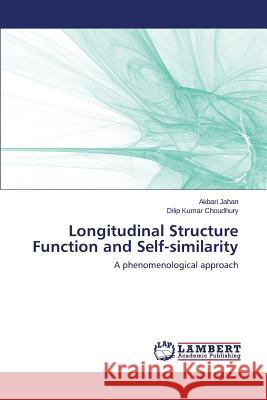Longitudinal Structure Function and Self-similarity » książka
Longitudinal Structure Function and Self-similarity
ISBN-13: 9783659599248 / Angielski / Miękka / 2014 / 56 str.
Today, the proton is seen as a dynamic system with three valence quarks and a sea of quarks and antiquarks that radiate gluons and gluons that split into quark-antiquark pairs or into two gluons. These processes are described by the theory of the strong force --- the Quantum Chromodynamics (QCD). This book presents a study of the structure of proton as probed at HERA (Hadron Electron Ring Accelerator) using a set of parton distribution functions (PDFs) based on self-similarity. This new approach to study the proton structure by looking at the fractal patterns in the parton densities at small x was first introduced by Lastovicka nearly a decade ago. In this book, we have basically taken the notion of the self-similarity based model to a further level where it is applied in determining the quark and gluon distributions as well as the longitudinal structure function both analytically as well as numerically. The momentum fractions of quarks and gluons in the model using momentum sum rule have been thoroughly studied and these have been used to pin down the gluon distribution function as well as to compute the lower bound on longitudinal structure function.
Today, the proton is seen as a dynamic system with three valence quarks and a sea of quarks and antiquarks that radiate gluons and gluons that split into quark-antiquark pairs or into two gluons. These processes are described by the theory of the strong force --- the Quantum Chromodynamics (QCD). This book presents a study of the structure of proton as probed at HERA (Hadron Electron Ring Accelerator) using a set of parton distribution functions (PDFs) based on self-similarity. This new approach to study the proton structure by looking at the fractal patterns in the parton densities at small x was first introduced by Lastovicka nearly a decade ago. In this book, we have basically taken the notion of the self-similarity based model to a further level where it is applied in determining the quark and gluon distributions as well as the longitudinal structure function both analytically as well as numerically. The momentum fractions of quarks and gluons in the model using momentum sum rule have been thoroughly studied and these have been used to pin down the gluon distribution function as well as to compute the lower bound on longitudinal structure function.











